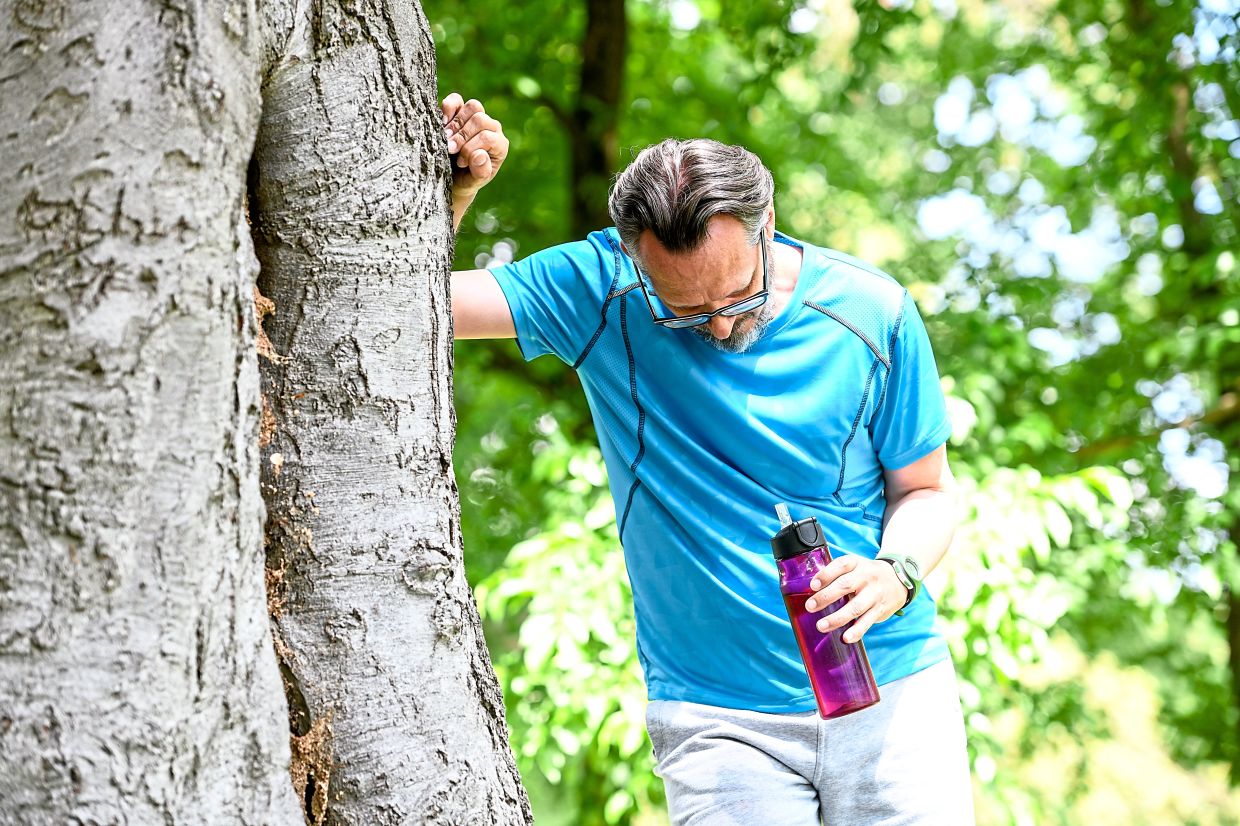Outdoor temperatures of 30°C and above will have you sweating even when standing still.
What if you’re out training for sporting reasons, or say, simply getting in some exercise to offset all the sitting at your desk job?
Is vigorous physical activity in hot weather safe?
“Our bodies are well-suited to withstand strain at high temperatures too,” says sport scientist Andreas Barz.
As an – admittedly extreme – example, he points to the annual seven-day Marathon des Sables, an approximately 250km ultramarathon in Morocco’s Sahara Desert, with temperatures reaching 40°C.
Research shows that the body can acclimatise to heat to a certain extent.
“Cooling improves and the body loses fewer electrolytes – i.e. minerals key to many bodily functions – via sweat,” he explains.
While the athletically-minded can count on this capability, training in the heat under a blazing sun poses risks.
Sports requiring prolonged strength – endurance in particular, such as for triathlons, tennis or football – can then become hazardous, warns Cologne-based German Sport University (DSHS) sports medicine specialist Prof Dr Hans-Georg Predel.
Doing sports in hot weather makes you sweat more profusely, and you can lose excessive fluid and electrolytes if you don’t drink enough to replenish them.
What’s more, your body temperature can rise to dangerous levels.
“Your body has to switch on its climate control, which is very stressful to the cardiovascular system,” Prof Predel says.
“Your heart must work a lot harder to ensure blood flow to your skin, for example.”
The riskiness of sports in hot weather depends in part on your age and whether you’ve any underlying medical conditions.
If you’re young and healthy, you can put greater strain on your body.
Barz recommends lightening your training load a little when temperatures reach 25°C: “If you normally jog for an hour, cut it to 40 minutes, and maybe even walk now and then.”
Once your body has had a couple of weeks to acclimatise to the heat, you can increase the duration somewhat, he says.
What if temperatures climb to upwards of 30°C, perhaps even prompting a heat alert?
“In that case, we recommend avoiding intensive training,” says Prof Predel.
It’s best then to shift your workout to cooler morning or evening hours, or move it to a cooler place, such as an air-conditioned gym, where you could use a treadmill or bicycle ergometer.
If you do train outdoors in hot weather, need you drink fluids in the process?
“During workouts lasting up to an hour, fluid intake isn’t a must,” Barz says.
“You can drink if you want to, but it’s not necessary.”
For longer workouts in the heat, it’s essential to say hydrated though.
As a rule of thumb, Barz advises drinking between a half-litre and one litre of fluids per hour, adding that it’s important, of course, to begin your training session already well hydrated.
A simple way to gauge whether you’re adequately hydrated, he says, is to check the colour of your urine in the toilet.
Colourless or light yellow are good signs, but dark yellow indicates your tank is low, so to speak, and you need to rehydrate.
ALSO READ: My urine isn’t yellow, what does that mean?
As for proper clothing, loose-fitting or sparse sportswear allowing plenty of airflow across your skin can help your body to cool down – “preferably in light colours, which don’t absorb as much heat from solar radiation,” Barz says.
Sunscreen should be liberally applied to exposed skin, and headwear is also important to guard against sunstroke.
If you experience headache, dizziness, circulatory problems, confusion, nausea or vomiting – either individually or in any combination – you should immediately stop training.
They’re warning signs that your body temperature has risen significantly, which at worst could lead to a life-threatening heatstroke.
ALSO READ: The difference between sunstroke and heatstroke
“In the event your symptoms remain despite cessation of training and initiation of cooling measures, you should get medical assistance,” says Barz.
Suspected heatstroke is cause to call your local emergency number. – By Ricarda Dieckmann/dpa
